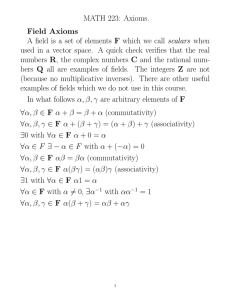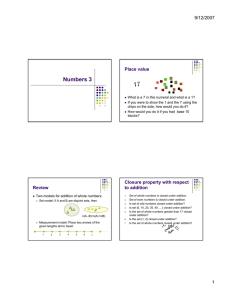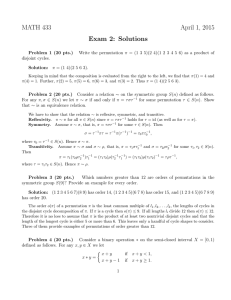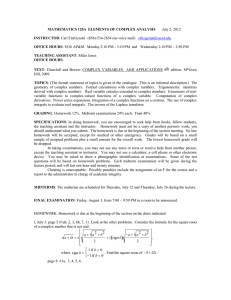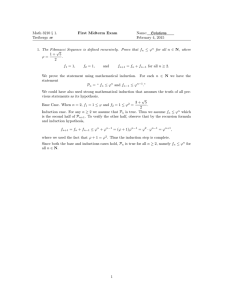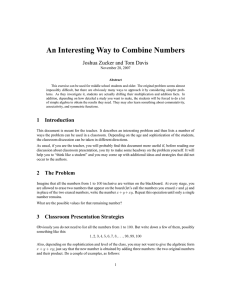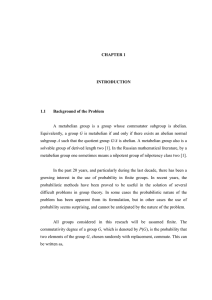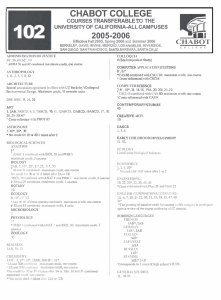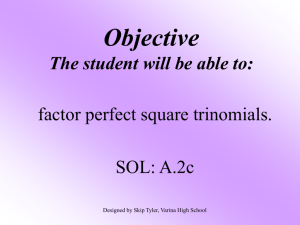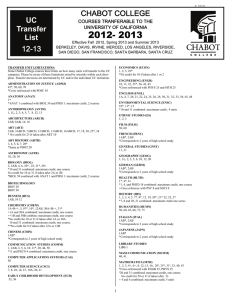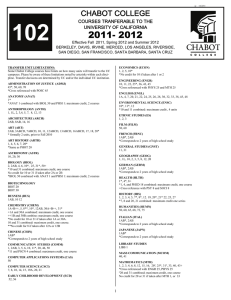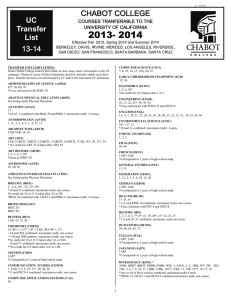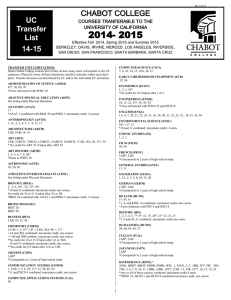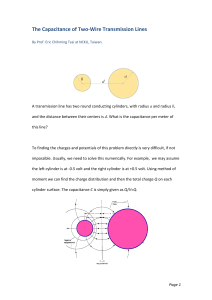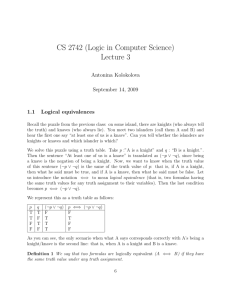the rules of arithmetic for real numbers
advertisement
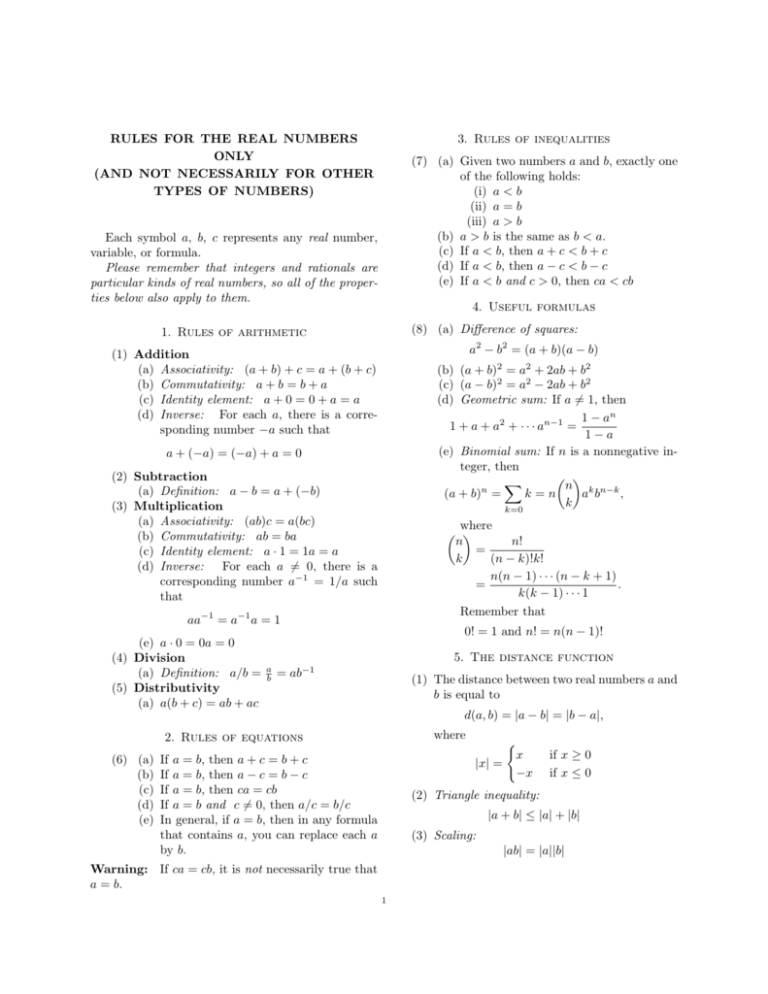
RULES FOR THE REAL NUMBERS ONLY (AND NOT NECESSARILY FOR OTHER TYPES OF NUMBERS) 3. Rules of inequalities (7) (a) Given two numbers a and b, exactly one of the following holds: (i) a < b (ii) a = b (iii) a > b (b) a > b is the same as b < a. (c) If a < b, then a + c < b + c (d) If a < b, then a − c < b − c (e) If a < b and c > 0, then ca < cb Each symbol a, b, c represents any real number, variable, or formula. Please remember that integers and rationals are particular kinds of real numbers, so all of the properties below also apply to them. 4. Useful formulas (8) (a) Difference of squares: 1. Rules of arithmetic a2 − b2 = (a + b)(a − b) (1) Addition (a) Associativity: (a + b) + c = a + (b + c) (b) Commutativity: a + b = b + a (c) Identity element: a + 0 = 0 + a = a (d) Inverse: For each a, there is a corresponding number −a such that (b) (a + b)2 = a2 + 2ab + b2 (c) (a − b)2 = a2 − 2ab + b2 (d) Geometric sum: If a 6= 1, then 1 − an 1 + a + a2 + · · · an−1 = 1−a (e) Binomial sum: If n is a nonnegative integer, then X n k n−k n (a + b) = k=n a b , k a + (−a) = (−a) + a = 0 (2) Subtraction (a) Definition: a − b = a + (−b) (3) Multiplication (a) Associativity: (ab)c = a(bc) (b) Commutativity: ab = ba (c) Identity element: a · 1 = 1a = a (d) Inverse: For each a 6= 0, there is a corresponding number a−1 = 1/a such that k=0 where n n! = k (n − k)!k! n(n − 1) · · · (n − k + 1) = . k(k − 1) · · · 1 Remember that aa−1 = a−1 a = 1 (e) a · 0 = 0a = 0 (4) Division (a) Definition: a/b = (5) Distributivity (a) a(b + c) = ab + ac 0! = 1 and n! = n(n − 1)! 5. The distance function a b = ab−1 (1) The distance between two real numbers a and b is equal to d(a, b) = |a − b| = |b − a|, where 2. Rules of equations (6) (a) (b) (c) (d) (e) ( x |x| = −x If a = b, then a + c = b + c If a = b, then a − c = b − c If a = b, then ca = cb If a = b and c 6= 0, then a/c = b/c In general, if a = b, then in any formula that contains a, you can replace each a by b. if x ≥ 0 if x ≤ 0 (2) Triangle inequality: |a + b| ≤ |a| + |b| (3) Scaling: |ab| = |a||b| Warning: If ca = cb, it is not necessarily true that a = b. 1
